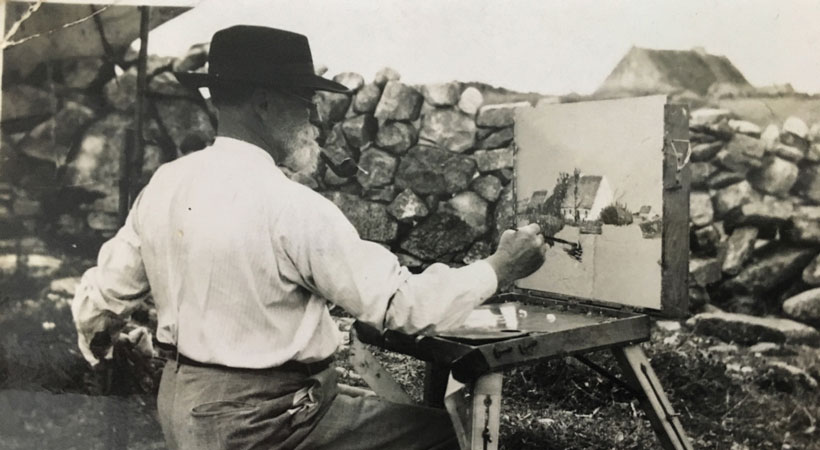Artist Charles Lamb’s paintings conveyed a romantic ideal of the new Ireland, writes Marie Bourke



Lamb working outdoors in Carraroe using his portable pochade painting box, 1949 ©The artist’s estate
Artist Charles Lamb’s paintings conveyed a romantic ideal of the new Ireland, writes Marie Bourke
Charles Lamb, 1893-1964, was one of the most influential 20th-century landscape painters in Ireland. His work formed part of a search for an Irish identity linked to imagery associated with the West of Ireland. For Lamb, a painting had to make a statement, which motivated the major work of his early career, Dancing at a Northern Crossroads, 1920. This ambitious canvas fused his knowledge of French art, notably the realist paintings of Edouard Manet, together with Orpen and Keating, and his growing awareness of the west (Fig 8). He used this figurative composition to express a concept of national identity that was effective in making his mark at the Royal Hibernian Academy (RHA). Recognised today as a leading work of early 20th-century Irish art, the painting is one of a series of key works recording traditional customs that form an important part of Irish history.
To read this article in full, subscribe or buy this edition of the Irish Arts Review
Charles Lamb, 1893-1964, was one of the most influential 20th-century landscape painters in Ireland. His work formed part of a search for an Irish identity linked to imagery associated with the West of Ireland. For Lamb, a painting had to make a statement, which motivated the major work of his early career, Dancing at a Northern Crossroads, 1920. This ambitious canvas fused his knowledge of French art, notably the realist paintings of Edouard Manet, together with Orpen and Keating, and his growing awareness of the west (Fig 8). He used this figurative composition to express a concept of national identity that was effective in making his mark at the Royal Hibernian Academy (RHA). Recognised today as a leading work of early 20th-century Irish art, the painting is one of a series of key works recording traditional customs that form an important part of Irish history.



